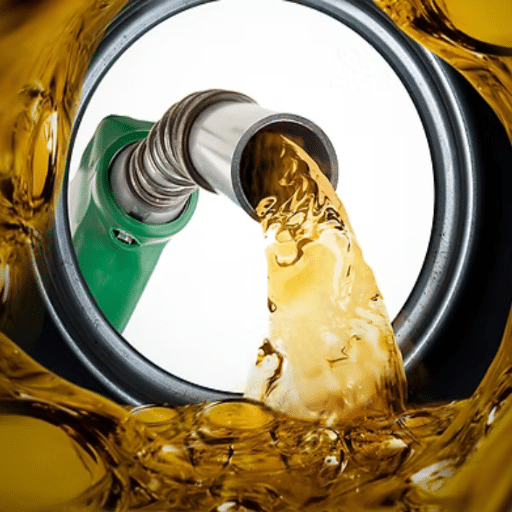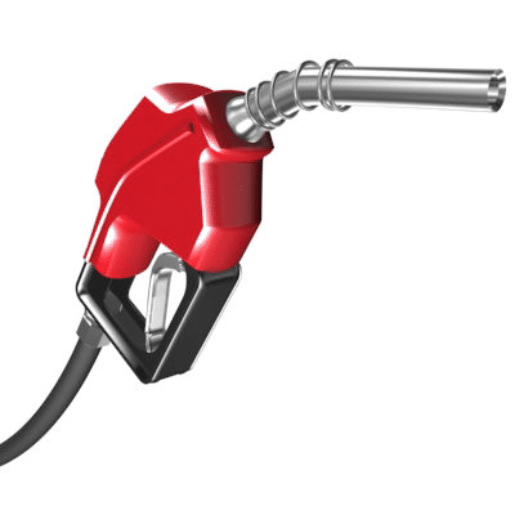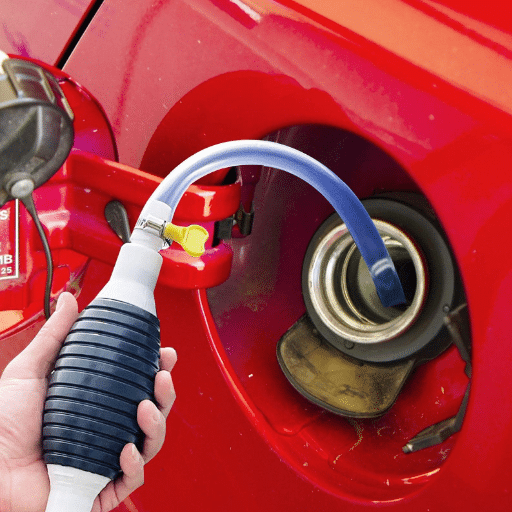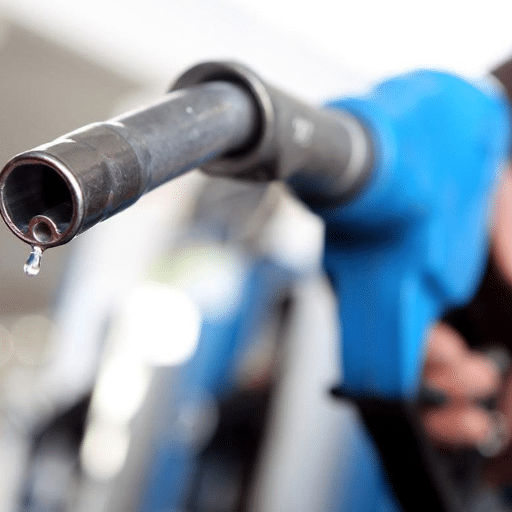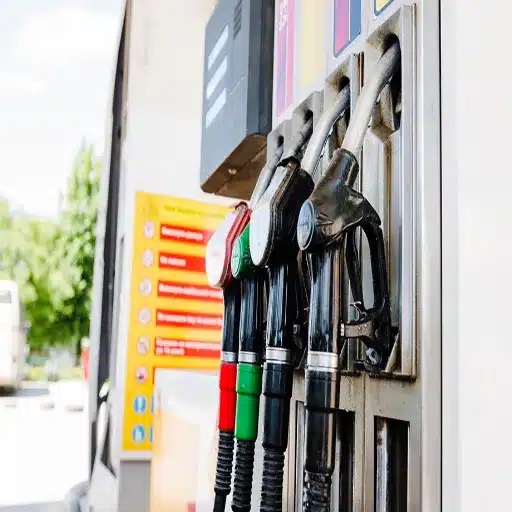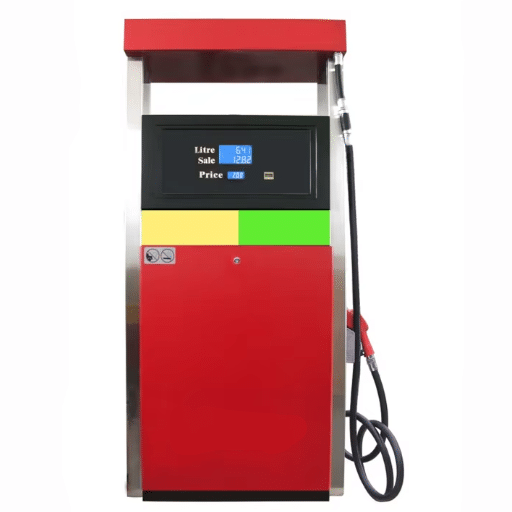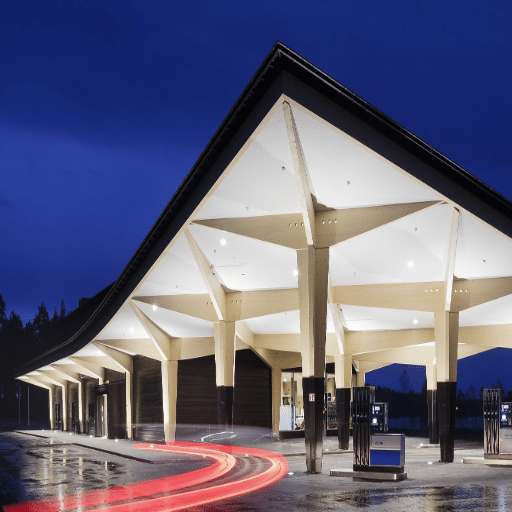A gas station is a very typical income-generating activity because fuel is in constant demand; thus, many are erected on busy roads. One must understand that a gas station is far more complicated than one might think to consider profitability. Are gas stations really doing great with huge profit margins, or are they operating at razor-thin profit margins with alternative revenue constructions sustaining them? This blog post examines the economic functioning of gasoline stations, considering how they generate revenue, the challenges posed by competitive markets, and why selling fuel may not be the primary source of revenue for them. By then, the reader would have a better understanding of the factors that make a gas station successful and what constitutes good business in reality.
Overview of Gas Station Operations
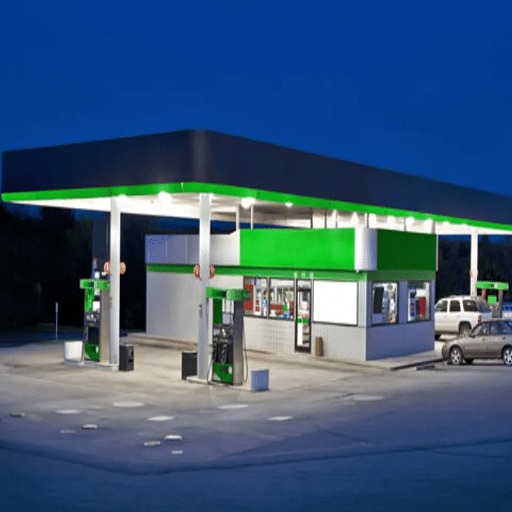
Gas stations primarily operate through the sale of fuel, but it is usually not their main source of income. Gas stations make marginal profits from fuel sales because the price of oil fluctuates, and they try to compete on prices themselves. Gas stations generate most of their income from the sale of convenience store merchandise, including snacks, drinks, essentials, and other services such as car washes or air service for tires. A gas station remains successful only if it balances the earnings from these various streams throughout operations and keeps customers satisfied.
What Gas Stations Sell
Fuel is the primary product sold at gas stations for vehicles; gasoline and diesel are the two principal types of fuel. However, these establishments also operate convenience stores that carry a wide range of items, including snacks, drinks, tobacco products, lottery tickets, and a variety of other miscellaneous goods, from household essentials. Some gas stations may also offer automotive products and supplies (sometimes even selling some high-end stuff): motor oil, windshield washer fluids, and so forth. Quite a few of them also sell services, such as car washes, air pumps, and vacuum cleaners, catering to a wide range of tastes, from quick-serve restaurants to coffee bars, and even EV charging stations.
Role of the Gas Station Owner
In the realm of gas station ownership, a range of duties is involved with systems beyond fuel sales. Owners manage the day-to-day operations of the station, including arranging for a sufficient fuel supply, maintaining equipment, and ensuring clean and safe surroundings for their customers. Hiring employees and training them to deliver excellent customer service ensures that operations run smoothly, which is another key responsibility. Gas station owners also closely monitor the financial performance of their stations, including sales trends, profit margins, and operating costs, to ensure the business remains profitable.
Industry Insight: An insight into recent industry trends reveals that gas stations accompanied by convenience stores generate gross revenue of upwards of $550 billion annually in the United States. These owners have been diversifying their offerings with high-demand items, including premium coffee, healthy snacks, and electric car charging stations. Trends in the market heavily recognize sustainability, encouraging more owners to invest in solar panels or energy-efficient systems to reduce operating costs and attract environmentally conscious patrons.
Another significant requirement for running a gasoline station is compliance with state and federal regulations. Owners must ensure that fuel is stored and handled correctly to prevent contamination and minimize environmental hazards. Technology has also become increasingly important, to the point where many businesses have installed digital payments and real-time inventory systems to operate with greater efficiency and enhance the customer experience. Adoption of these strategies translates to gas station owners adapting to the ever-changing retail and energy landscapes while meeting current consumer needs.
Understanding Gas Sales
Several factors influence gas sales, including demand, crude oil prices, and shifting customer behavior. As recent statistics illustrate, barely 369 million gallons of gasoline are consumed in the United States per day, meaning it remains a staple in the execution of daily transport. Seasonality and trends are another factor; for instance, gas consumption is typically higher in the summer, when interstate travel and local tourism are more prevalent.
Additionally, the increasing demand for fuel-efficient vehicles and the growing adoption of electric vehicles (EVs) are reshaping the gas sales landscape. According to reports, by 2030, the global market share of EVs is forecasted to be approximately 60%, resulting in a gradual decline in demand for traditional gasoline. Still, in response, many gas stations are stepping up to diversify their operations by installing EV charging stations, thereby expanding their reach to a broader clientele.
Price volatility remains a key feature of gas trading, resulting from the interplay of geopolitical issues and supply-demand forces that also affect crude oil. Gas station owners must establish competitive pricing strategies and manage operational costs to sustain profitability. By staying abreast of these trends and adapting to them, businessmen in the gas retail sector will remain competitive in this era of change.
Gas Station Revenue Streams
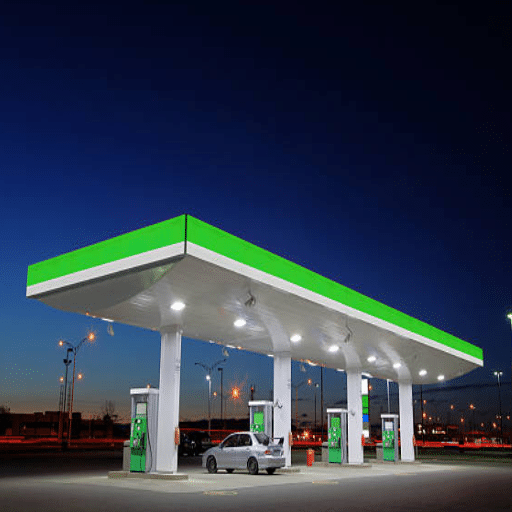
Fuel Sales
A majority of revenue is generated through the sale of gasoline and diesel. Competitive prices for the fuel, along with a steady supply, are what keep customers coming back for more visits.
Convenience Store Sales
Non-fuel items contribute to a good chunk of the revenue. These include things like snacks, drinks, car accessories, lottery ticket sales, and car washes-sometimes they sell for more than gasoline.
By optimizing the channeling of these revenues, gas stations can significantly increase profits while serving their customers with ease.
Fuel Sales and Gas Prices
Fuel sales hence constitute the largest segment of gas station income, with a considerable effect due to changing fuel prices. The average gasoline price in the United States in October 2023 is $3.80 per gallon, with regional differences influenced by factors such as taxes, transportation, and proximity to refineries. Generally, due to production and demand factors, the price trends for diesel are always slightly higher than those for gasoline, with a current average of $4.50 per gallon.
| Fuel Type | Average Price (USD) | Price Factors |
|---|---|---|
| Gasoline | $3.80 per gallon | Regional taxes, transportation costs, refinery proximity |
| Diesel | $4.50 per gallon | Production factors, higher demand in commercial sector |
Several factors influencing fuel prices include oil prices, supply chain disruptions, and geopolitical developments. Crude oil prices have recently stabilized near $85 per barrel, a balancing act reflecting the intentional limitation of output by global producers amidst encouraging demand recovery following the pandemic. Additionally, in local markets, price variations occur, with urban stations generally charging higher prices than those in rural areas due to higher operating costs.
Critical to managing fuel supply is understanding people and their value systems. Drivers are always on the lookout for petrol stations with prices they consider fair, that run loyalty programs, and also have other amenities, such as a convenience store or a café. This highlights the need to strike a balance between pricing and the additional services that help attract customers.
Convenience Store Sales
Convenience store sales serve a crucial function by supplementing the income streams of fuel stations. Recent studies have pointed to this trend: consumers visit less for a quick snack and more for necessities like groceries, beverages, and ready-to-eat food. Packaged-beverage products have gained in popularity, with energy drinks and bottled waters emerging as the most successful. Additionally, a surge in demand is evident for grab-and-go options, such as sandwiches and salads, as more people seek convenience during their busy schedules.
The lives of customers are being grossly affected by the integration of technology within the context of convenience stores. Now(Present Time), mobile payments are quite popular on campus, to self-check, kiosks have become the next best thing, and app-based loyalty programs are being offered as pure biryani. The saleability of clean and well-stocked convenience stores, with a leaning towards health-conscious goodies such as organic snacks and sugar-free options, is yet another temptation luring customers. This trend underscores the imperative need to adapt product offerings and store layouts to meet the ever-changing preferences of customers.
Additional Revenue Opportunities
Convenience stores offer ample opportunities to diversify income streams through current trends and evolving consumer demands. Delivery services lay a fair path for development. With the global delivery market expected to exceed $200 billion by 2027, this presents an opportunity to provide same-day or on-demand delivery of essentials, snacks, and drinks to a broader population. Those who have embraced delivery services, such as GoPuff, have seen substantial growth in reach and revenue.
Another opportunity is to align digital advertising platforms inside the stores. By displaying digital screens in-store for targeted ads or product promotions, stores can generate revenue through brand partnerships, thereby enhancing the overall customer experience. Reports have suggested that in-store digital advertising causes a 30% uplift in unplanned purchases, speaking volumes about their effectiveness.
Subscription-based services can be offered to frequent customers by stores. Monthly or annual meal kits, coffee-subscription discounts, or exclusive membership benefits that retain customers while giving them a steady line of regular income, from where 435 % subscription growth is in view at present, truly is a passing thought to maintain.
Now, go ahead and plan some in-store events, such as product samplings, workshops, or local collaborations with small businesses that focus on bringing foot traffic to the store and creating those relationships. These are the experiences that add value far beyond the usual transaction in a traditional convenience store, propelling them to focus as a viable community center. These strategies are transparent in light of evolving consumer behaviors that can incubate for long-term growth.
Profit Margins in the Gas Industry
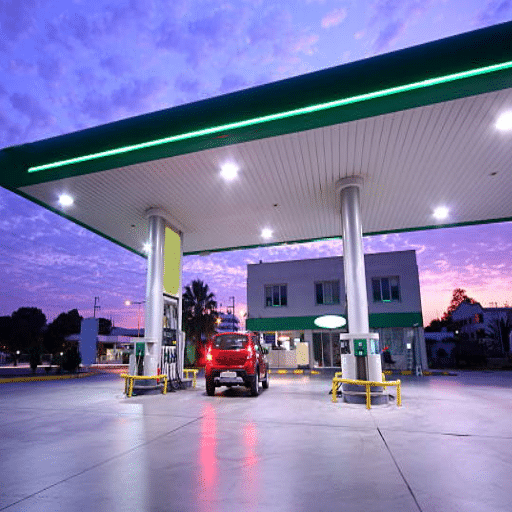
Key Industry Fact
Profit margins in the gas industry are typically considered low compared to other sectors. On average, a gas station may charge only a few cents per gallon, with the majority of the revenue being the wholesale cost of fuel, taxes, and operating costs. To sustain profitability, many gas stations diversify their operations, relying on income from convenience stores, car washes, and food services. Other economic variables, such as volatility in crude oil prices and local competition, will also have their local effects on profitability.
How Much Does a Gas Station Make on Fuel?
Margins for fuel sales in gas stations are shockingly small. Gas stations typically earn $0.03 to $0.07, on average, per gallon of fuel sold after deducting various expenses, including freight costs, taxes, credit card fees, and overhead. A slim margin allows crude oil price fluctuations, regional demand, and state taxes to detract significantly from profitability.
| Price Component | Percentage of Retail Price | Description |
|---|---|---|
| Crude Oil Costs | 55% | Base cost of petroleum |
| Refining Costs | 14% | Processing crude into gasoline |
| Distribution & Marketing | 16% | Transportation and retail operations |
| Taxes | 15% | Federal and state taxes |
For example, retail gasoline prices are influenced by a multitude of constituent factors, including: crude oil costs (roughly 55% of the price), refining costs (approximately 14%), distribution and marketing (around 16%), and taxes (about 15%). Gas stations cannot generate a substantial amount of revenue from retail sales, as much of the income is allocated to these expenses.
Profit Example: Given this perspective, selling 5,000 gallons a day at a gas station with an average profit of $0.05 per gallon will yield a daily fuel profit of $250. For this reason, many petrol station operators consider fuel sales the loss leader to ferry customers toward other products with greater profit margins, such as convenience store goods. Diversified streams of profit, therefore, remain essential for gas stations to survive in a competitive and volatile market.
Profit Drivers for Gas Stations
Gas stations employ a combination of strategies to remain profitable, as margins from fuel sales alone are typically low. The primary profit promoters are those coming from the convenience store. According to recent studies, approximately 44% of total gas station revenue is generated by sales in their stores, including snacks, drinks, cigarettes, and lottery tickets. A gross margin in the range of 25% to 50% is, in fact, applicable for these items, which is far more than what fuel sales give.
Another source of revenue comes from services for cars, including automated services such as car washes, oil changes, tire and battery sales, and minor repair work. According to some accounts, car washes can be a high-profit business, with margins reaching 50% or higher due to low operating costs following the initial investment. Fuel stations also often run successful fuel loyalty programs or partner with grocery stores to attract customers and generate repeat business.
The new trend towards the provision of electric vehicle charging stations is also considered an attractive option to tap into potential revenues. The charging infrastructure is still in an early adoption phase, with growing expectations, whereby a gas station with a charging point can capture a new segment of customers. Hence, diversifying into new service areas and adapting to consumer demand remain crucial for maintaining profitability in a changing market.
Factors Affecting Profitability
Consumer Behavior
When consumer preferences shift, a new set of demand dynamics will affect the profitability of gas station businesses. The demand for fuel has begun to shift with the emergence of fuel-efficient and electric vehicles. According to some data, electric vehicle sales are expected to reach over 40 million units globally by 2030. Due to this trend, gas stations are now compelled to adapt to emerging realities, such as installing EV charging stations alongside convenience store operations.
Oil and Gas Prices
Fluctuations in crude oil prices serve as one such factor affecting the fuel margin. Gas stations may become less profitable from a fuel margin perspective during high oil price situations, as competition prevents them from passing on the cost to consumers. In the early months of 2022, the spike in crude prices contributed to narrower margins for gas retailers globally.
Location of the Store
Foot traffic and sales depend heavily on the location of a gas station. Stations on highways and in city centers typically generate higher revenues from fuel and convenience store sales. Stations in cities or more hard-to-reach areas will be hard-pressed to maintain high volumes and will primarily depend on locals or regular customers to sustain revenues.
Diversification of Revenue Streams
Apart from that, car washes, an array of food and beverage options, or delivery service collaborations can further enhance consumer spending per visit. For example, some stations are integrating fast-food franchises, which helps increase overall sales by attracting an even wider range of customers.
Law Regulations and Environmental Policies
Stricter environmental regulations aimed at reducing carbon emissions could translate into higher operational costs for stations if they require infrastructure upgrades. However, incentives for EV charging infrastructure and renewable energy adoption might alleviate some of these expenses, thereby presenting opportunities for long-term growth.
Technological Advancements
Technology continues to reshape the industry. Mobile payment facilities, loyalty apps, and real-time fuel price monitors draw tech-savvy customers while simultaneously creating convenience. It is projected that by 2025, more than 80% of gas stations will have implemented digital solutions to enhance their operational paradigm and customer experience. The early adopters of these technologies tend to fare better.
All these factors will facilitate superior strategic planning and better equip gas station operators with the tools to adapt to this dynamic and evolving industry landscape.
Challenges Facing Gas Station Owners
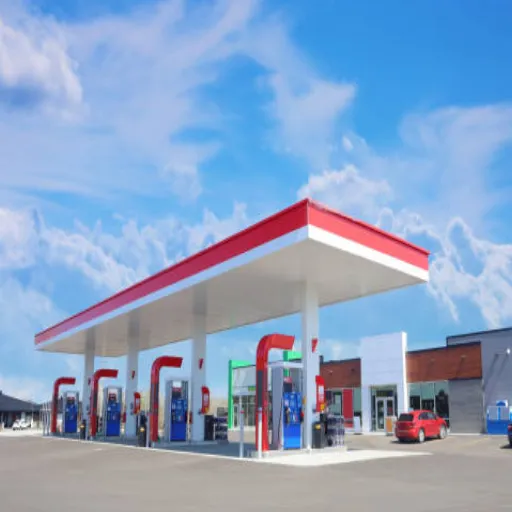
In this day and age, the gas station owners are being confronted with several key hurdles:
- Increase in Operational Costs – The rise in the prices of fuel, labor, and maintenance erodes the profit margin and even threatens the entire business’s sustainability.
- Industry Competitors and Pricing Pressure – The Presence of many competitors in the industry narrows profit margins and keeps pricing pressure constant from one day to the next.
- EV Transition – The rising adoption of EVs is causing the need for fuel to go down. Hence, the owners have to look for alternative streams of income, such as the development of charging infrastructure for EVs.
- Regulatory Compliance – Enforcing environmental and safety regulations is a costly affair and requires constant monitoring to avoid penalties.
- Consumer Behavior – Consumers nowadays tend to demand more services, such as convenience stores and digital payment options for governments, putting pressure on those owners to further enhance their offerings.
Faced with these difficulties, it requires strategic planning and adaptation to industry changes.
Market Competition and Pricing Strategies
The fuel retailing industry is fiercely competitive, with various players vying to gain a competitive edge. Price is paramount to the competition. Prices fluctuate in response to changing crude oil costs, geopolitical implications, and currency exchange rates, making it challenging for retailers to maintain competitively priced products while also generating a profit.
There is a trend in dynamic pricing, where retailers attract customers by adjusting prices in response to market changes or competitor behavior. For example, a retailer could use competitive pricing during peak fuel consumption hours to draw attention away from nearby fuel stations. Additionally, loyalty programs and discounts offered through mobile applications or payment methods have become increasingly popular as a means to attract customers and foster repeat business. It is reported that over 70% of customers would be more likely to visit a station with loyalty rewards, thus underscoring the need for personalized incentives.
Nowadays, non-fuel offerings have also become a key area of differentiation. Convenience stores, cafes, and fast food outlets integrated into fuel stations create alternative revenue streams while enhancing the overall customer experience. This model has proven to be lucrative, with some chains reporting that nonfuel sales contribute in excess of 40% of the total profit in some regions. Meanwhile, technology aids in many ways, as an increasing number of retailers utilize advanced data analytics tools to optimize their pricing models, inventory, and market trend forecasting.
In conclusion, competitive pricing, customer loyalty programs, and diversified service offerings are all key pillars that allow fuel retailers to differentiate themselves in a highly competitive market and grow sustainably.
Regulatory and Environmental Factors
Evolving regulations and policies impose a heavy hand on fuel retailing. Governments worldwide are tightening emissions standards to mitigate the impacts of climate change, imposing limits on CO2 emissions and offering incentives for cleaner energy sources. From the EU’s standpoint, in its effort to meet the ambitious target set under the “Fit for 55” package to reduce greenhouse gas emissions by at least 55% by 2030, fuel retailers will be compelled to shift their focus toward greener solutions and away from fossil fuels.
Furthermore, many other regions are tightening fuel composition regulations, such as increasing the minimum percentage of blending with biofuels like ethanol and biodiesel. Recent information indicates that the worldwide production of biofuels is expected to increase by 28% over the next five years, as a step toward reducing dependence on conventional fuels. This conversion requirement leads to a significant investment in storage and distribution infrastructure, resulting in a substantial burden on retailers’ operational costs.
Concerns about the environment are perhaps hastening the adoption of electric vehicles, what with Governments doling out incentives and subsidies for the purchase of EVs and simultaneously pouring huge investments into the development of the charging infrastructure. Examples in the United States include allocating more than $5 billion to expand EV charging networks nationwide. This change compels fuel retailers to shift to providing EV charging stations interspersed with renewable energy sources while diversifying the service offerings to stay competitive in an ever-changing environment.
These laws and environmental expectations provide tough challenges, but they also present opportunities for growth and ingenuity. Retailers that embrace clean energy demands and adhere to sustainability goals have a better chance of thriving beyond the short term.
Economic Impact on Gas Station Revenue
Clean energy transition and EV revolution reshape revenue streams for traditional gas stations. According to a new report, global EV sales increased 35% in 2022, indicating a rising consumer transition to gasoline. So, the line of cash flow diminishes at the icelines, as a drop in fuel sales forms the bulk.
Opportunities to diversify revenue streams have now emerged. Gas stations installing EV charging infrastructure may now be able to attract a new client base to offset the decline in gasoline sales. EV owners report spending 20–30 minutes at charging stations, which could imply more buying from the store during charging. On the other hand, utilizing renewable energy systems, such as on-site solar fields, can reduce operational costs by half and generate additional income through energy reselling under energy purchase programs.
These kinds of economic forces account for accelerated changes in consumer behavior because prices of crude oil fluctuate, and governments may offer incentives for adopting EVs. For instance, the US has passed legislation that allows purchasers of EVs to claim tax credits up to $7,500. This acts as an incentive for consumers from a financial perspective, thereby possibly diminishing demand for fossil fuels. Once gas stations take every measure to adjust to these external market pressures, they will be well-equipped to maintain and further their profitability in this rapidly changing energy landscape.
Future Trends in Gas Station Profits
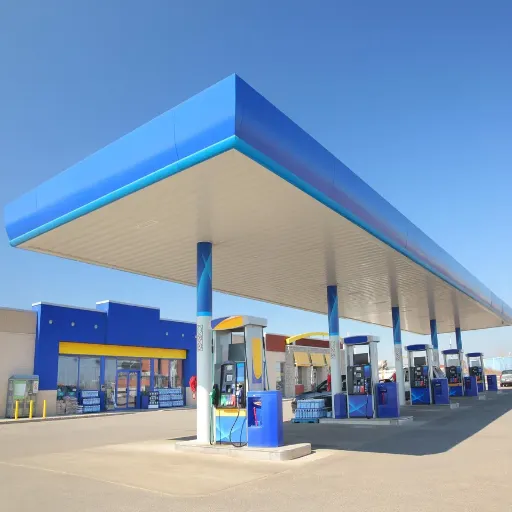
Transitioning to electric vehicles (EVs) and the resulting changes in energy consumption patterns may potentially restructure the landscape of gas stations for profit. While the demand for petrol may decrease, stations can continue their business operations in a manner that allows them to diversify their offerings. The key trends include the inclusion of EV charging stations to serve the growing number of EVs on the road and the expansion of convenience store operations as a crucial path toward revenue. Additionally, utilizing renewable sources, such as solar panel installation, will reduce costs and meet consumer expectations. In this way, gas stations that can innovate with the times are more likely to be profitable in the future.
Impact of Electric Vehicles on Gas Sales
EVs are reshaping the automotive industry and, therefore, somewhat affecting gasoline sales worldwide. More consumers are opting to go electric, owing to technology advances and declining battery pricing, sometimes coupled with government incentives. As stated in recent reports, worldwide EV sales crossed the 10 million mark in 2022, a 55% jump from the previous year. The rapid pace of EV industry uptake naturally translates to lower demand for traditional gasoline, which is the source of fuel for electric vehicles.
Furthermore, the research informs us that when it comes to gases such as CO2, transportation contributes about one-fourth of the global emissions, which, in turn, has become an impetus for outlawing or restricting the consumption of fossil fuels and thereby forcing automobile manufacturers to concentrate on electric vehicles. By 2030, electric cars may constitute as much as 40% of new vehicle sales in principal markets such as the United States, Europe, and China. This shift is expected to hurt gasoline stations, with gasoline demand projected to decline by approximately 20% in developed areas by the end of this decade.
Gas stations were compelled to utilize these changes as an advantage by expanding their services to include EV charging infrastructure, among others, so that they remain relevant and profitable. Although becoming irrelevant and losing sales over time is the fate that awaits them unless they cling to the electrification trend now.
Innovations in Convenience Offerings
To meet the evolving needs of the consumer environment, we have chosen to revamp the entire array of conveniences at our outlets, including a grab-and-go option, healthy snacking alternatives, and more digital integration features such as the ability to order via mobile phones and contactless payment. We hope that by introducing these innovations first, we can offer our patrons more value and convenience, ultimately providing them with an experience worth remembering.
Adapting to Changing Consumer Behavior
The changing behavior of consumers forces businesses to adapt to shifts in preferences and evolving technologies. In recent times, consumers have placed a great emphasis on personalizing their experiences and products, being convenient, and preserving the environment. The possibility of customizing experiences and products can be facilitated based on data observations, allowing the business to apply this knowledge to tailor such an experience or product to an individual. Convenience is yet another factor for which the faster delivery of services, integration of mobile technology, and a frictionless transaction are being demanded at an ever-increasing pace. Sustainability is now also a significant issue as an increasing number of consumers are fully supportive of environmentally friendly brands and practices. By adhering to these emerging trends, companies maintain their brand standing and foster relationships with their customers.
Reference Sources
1. The Effect of Facilities and Service Quality on Customer Satisfaction of Gas Stations
2. Optimizing Number and Locations of Alternative-Fuel Stations Using a Multi-Criteria Approach
3. Proposed Improvement of Pertalite Fuel Outbound Logistics Performance
Frequently Asked Questions (FAQs)
How is it that gas stations make a lot of money?
From a particular perspective, gas stations earn revenue from fuel sales; however, their profits are significantly enhanced by the sale of other convenience goods, car wash services, and auto repair services. Prices of fuels fluctuate based on market variables, and profit margins on fuel are typically quite slim. Most gas station owners, therefore, try to diversify their businesses to improve their profitability.
What is the profit margin of a gas station?
Gas stations typically have a profit margin of between 1 and 3 percent on fuel sales. Sometimes, gas stations may barely break even on gas sales but make significantly larger margins on non-gas sales, such as convenience stores and services like oil changes. This diversification strategy helps gas station owners maximize their net profits.
How much does a gas station make annually?
Depending on their location, traffic, and services offered, gas stations can have annual revenue levels ranging from hundreds of thousands to a couple of millions of dollars. Areas that experience more traffic cause the fuel to be sold in greater quantities, and the profit obtained from the sale of convenience items and other services increases.
What are the key factors that impact gas station profitability?
Some key factors include location, competition, fuel prices, and the limited or wide range of services that can be provided. Gas station owners can have a considerable impact on total profitability if they can sell high-margin products and services, such as food and beverage items. Proper inventory management and adhering to the licenses and permits are also necessary.
What are the usual revenue streams of a gas station?
A gas station may generate multiple streams of revenue, including selling fuels, offering food in the convenience store, providing car washes, and performing auto repairs. However, in an effort to attract more traffic and bring in more revenue, most gas stations still pursue extra services, such as lottery-ticket sales or EV charging.
How do gas stations manipulate their prices on the fuel in relation to the market?
Gas stations adjust the bulk price of fuel in sync with Gramshore prices and maintain competitiveness in line with the interstate market. They must keep their selling prices attractive enough to cover operational expenses. By strategic pricing, gas stations can retain customer loyalty and increase net profit margins.
What additional services do the stations offer to enhance their return?
If profitability is put into perspective, gas stations are seen to generate more revenue by providing additional services, such as a car wash, oil changes, and the sale of convenience items. These services usually command higher profit margins than the sale of fuel, allowing the rest of the revenue brackets to benefit gas station owners, thus ensuring a steady income flow.
What is the importance of convenience store sales to gas station revenues?
Since convenience store sales offer a higher profit margin than fuel sales, they have a significant impact on gas station revenues. Most customers fuel their vehicles and purchase convenience items from gas stations, directly contributing to the profitability of these businesses. Therefore, optimal marketing and product selection at convenience stores will help increase traffic and the financial success of the companies.

